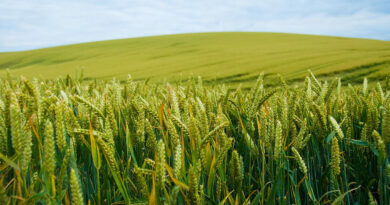Impacts Of Genetically Modified Food
Genetically modified (GM) food or crops contain genetic material that has been artificially manipulated so as to produce new functions or substances; also termed genetic engineered food.
The use of genetically modified food by man has in the recent past been embraced on large scale in different parts of the world. In the world today, many genetically modified products can be found on the markets and groceries. Most consumers are ignorant of the impact these products may have on them. Despite this overwhelming ignorance, many people are waking up and are becoming aware of the effects of consuming GM food. In 2007 for example, 91% of soya bean and about 81% of canola sold in the United States were genetically modified. In addition, many researchers have come up with findings that suggest that about 60% of all processed food is genetically modified. The debate on whether or not there is a net benefit in the consumption of genetically modified food by man has never ended. Even though the use of genetically modified food is believed to have advantageous impacts on humanity such as increased food production, it has some serious disadvantages that necessitate its control. This paper presents a view to oppose the notion that the use GM food has many advantages (Blake, 1990).
Those who support the use of GM food talk of reducing environmental pollution. This, they say, results from reduced use of pesticides after the modification of crops to make them naturally resistant to pests. It is however important to note here that there is no real evidence to show that pollution reduces. In fact, these are believed to have a counter-effect that would result in serious pollution. For example, introducing herbicide resistant crops may result in farmers taking advantage of the fact that the crops are resistant and thus spraying large quantities of herbicides to kill weeds. This would in turn result in an increase in environmental pollution hence a big disadvantage.
Advocates argue that genetic modification can enable crops to carry certain specific vitamins and nutrients that are crucial for human health. This, they say, could easily help in solving the problem of nutrient deficiency in poor countries. The best example quoted is Golden Rice which has vitamin A. However, studies show that in order to get vitamin A one would have to consume at least twice the normal consumption quantities. This is very ironic because poor people for which the rice is modified would not have the capability to acquire large volumes of rice thus GM food does not enhance nutrient sufficiency.
Researchers that support the use of genetically modified food argue that it could solve the problem of food shortage in developing countries. They further argue that this would cater for the continuous increase in human population. It is important to state here that indeed genetic engineering may reduce the costs of production. However, it should be noted that the scale of production for the crops does not have a significant increase. This can therefore result in reduced yield. It has been proven that the genetically modified soy bean has about 10% reduced yield as compared to the wild species (Meziani & Warwick, 2002). The real cause of hunger in the world is not lack of food supply but the political and diplomatic policies that result in poverty in third world countries. Poverty is what in turn results in hunger. It is therefore important to note here that even though GM food reduces poverty, most companies that own the biotechnology would restrict the distribution of the technology to the poor countries (Tam, 2000).
Embracing technology is not a bad thing. It is however important for mankind to assess extensively the consequences of their actions over a long period of time. GM foods have not been in existence for a very long time thus it would not be safe for researchers to celebrate that the food is advantageous to mankind, because as it stand now there are many disadvantages
References
Blake, F. (1990). Organic farming and Growing. Wiltshire, UK: The Crowood Press.
Meziani, G. & Warwick, H. (2002). Seeds of doubt. U.K: Soil Association. Retrieved from http://www.soilassociation.org/Whyorganic/GM/Reports/tabid/390/Default.aspx
Tam, P. (2000). Genetically Modified Foods: The Battle Comes to Canada. Ottawa: citizen.





Genetically modified foods or genetically engineered organisms (GMOs) are defined as organisms (i.e. animals, microorganisms or plants) in which the genetical material (DNA) or (deoxyribonucleic acid) has been altered artificially by way of natural recombination and/or mating. And despite what anti-GMO websites say…they’re safe for human consumption.
Even a 2015 survey performed by Pew Research Center show that nearly 9 out of 10 scientists say GMOs are “generally safe” to consume. And let’s not forget that changes to genes occur naturally in nature. The food you eat today looked vastly different as what grew hundreds or even thousands of year ago.
If genetically modified food is safe then why does the American Academy of Environmental Medicine advise doctors to prescribe patients non-GMO diets? And there has been an increase in chronic illnesses after GMOs were introduced in 1997. Health problems jumped from 8 to 13 percent in just 9 years; e.g. digestive problems, autism, food allergies and reproductive disorders.